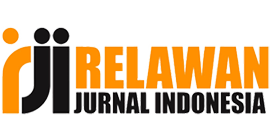Adaptasi Fisiologis Bayi Baru Lahir melalui Persalinan Normal dengan Lotus Birth dan Tanpa Lotus Birth
DOI:
https://doi.org/10.31539/jks.v5i1.2683Abstract
This study aims to determine the differences in the physiological adaptation of newborns through expected delivery with lotus birth and without lotus birth at Kandai Public Health Center, Kendari City. The method used is quantitative research using a comparative study with a cross-sectional approach. The results showed differences in physiological adaptation (heart rate, respiratory rate, thermoregulated frequency, or body temperature) of newborns through expected delivery with lotus birth and without lotus birth. Respondent statistical data obtained from each physiological system of newborns showed a p-value of 0.013. In conclusion, there are differences in the physiological adaptation of newborns through expected delivery with lotus birth and without lotus birth at the Kandai Public Health Center, Kendari City.
Keywords: Physiological Adaptation, Newborn, Lotus Birth, Without Lotus Birth
References
Doktersehat. (2018). Amankah Melahirkan dengan Metode Lotus Birth?. Retrieved fromhttps://doktersehat.com/aman kah-melahirkan-dengan-metodelotus-birth/
Hanum, P., & Nasution, S. W. (2019). Efektifitas Metode Lotus Birth terhadap Kejadian Anemia Defisiensi Zat Besi pada Bayi. Jumatik: Jurnal Ilmiah Penelitian Kesehatan, 4(2), 213-219. http://jurnal.uinsu.ac.id/index.php/kesmas/article/view/5591
Harun, S. N. (2019). Adaptasi Fisiologis Bayi Baru Lahir dengan Metode Lotus Birth dan Tanpa Lotus Birth di Klinik Anny Raharjo dan RSU Budi Kemuliaan Bulan Maret 2019. Sekolah Tinggi Ilmu Kesehatan Budi Kemuliaan
Herlyssa, H., Mulyati, S., & Martini, R. (2015). Perbedaan Pertumbuhan Bayi Baru Lahir Pada Metode Lotus Birth.Jurnal Ilmu dan Teknologi Kesehatan, 2(2), 1-9. https://ejurnal.poltekkesjakarta3.ac.id/index.php/jitek/article/view/33
Kementerian Kesehatan RI. (2018). Profil Kesehatan Indonesia. Jakarta. https://pusdatin.kemkes.go.id/folder/view/01/structure-publikasi-data-pusat-data-dan-informasi.html
Padila, P., & Agustien, I. (2019). Suhu Tubuh Bayi Prematur di Inkubator Dinding Tunggal dengan Inkubator Dinding Tunggal Disertai Sungkup. Jurnal Keperawatan Silampari, 2(2), 113-122. https://doi.org/10.31539/jks.v2i2.651
Padila, P., Amin, M., & Rizki, R. (2018). Pengalaman Ibu dalam Merawat Bayi Preterm yang Pernah Dirawat di Ruang Neonatus Intensive Care Unit Kota Bengkulu. Jurnal Keperawatan Silampari, 1(2), 1-16. https://doi.org/10.31539/ jks.v1i2.82
Padila, P., Panzilion, P., Andri, J., Nurhayati, N., & J, H. (2021). Pengalaman Ibu Usia Remaja Melahirkan Anak di Masa Pandemi COVID-19. Journal of Telenursing (JOTING), 3(1), 63-72. https://doi.org/10.31539/joting.v3i1.2075
Profil Kesehatan Sulawesi Tenggara. (2018). Profil Kesehatan Sulawesi Tenggara https://pusdatin.kemkes.go.id/index.php?category=profil-kesehatan-kabupaten&provid=PV-027
Puskesmas Kandai. (2019). Profil Puskesmas Kandai. Kendari
Rachana, S. (2021). Lotus Birth. Australia: Greenwood Press
Ratnasari, L., Subekti, E. L., Wahyundari, A., & Eko, N. (2013).Pengaruh Persalinan Lotus Birth terhadap Lama Pelepasan Plasenta, Lama Pelepasan Tali Pusat dan Keberhasilan Bounding Attachment. Jurnal Kebidanan, 5(2), 46-56. http://ejurnal.stikeseub.ac.id/index.php/jkeb/article/view/122
Saifuddin, S.(2020). Ilmu Kebidanan.Jakarta: Yayasan Bina Pustaka
Setyorini, Y. (2015). Pengaruh Metode Persalinan Lotus terhadap Adaptasi Bayi Baru Lahir. Jurnal Terpadu Ilmu Kesehatan, 4.Available at : jurnal.Poltekkes– solo.ac.Id/index.Php/Int/article/viewFile/270/243
Sugarni, M., Askrening, A., &Syahrianti, S. (2018). Perbedaan Lotus Birth dengan Tanpa Lotus Birth pada Persalinan Normal terhadap Adaptasi Fisiologis Bayi Baru Lahir di Puskesmas Kandai Kota Kendari. Potiteknik Kesehatan Kendari. http://repository.poltekkes-kdi.ac.id/575/1/SKRIPSI%20PDF%20LENGKAP.pdf
WHO. (2018). Tren Persalinan. www.academia.Edu/9825392/minikti_trenpersalinan. (Diakses tanggal 27/02/2020)


